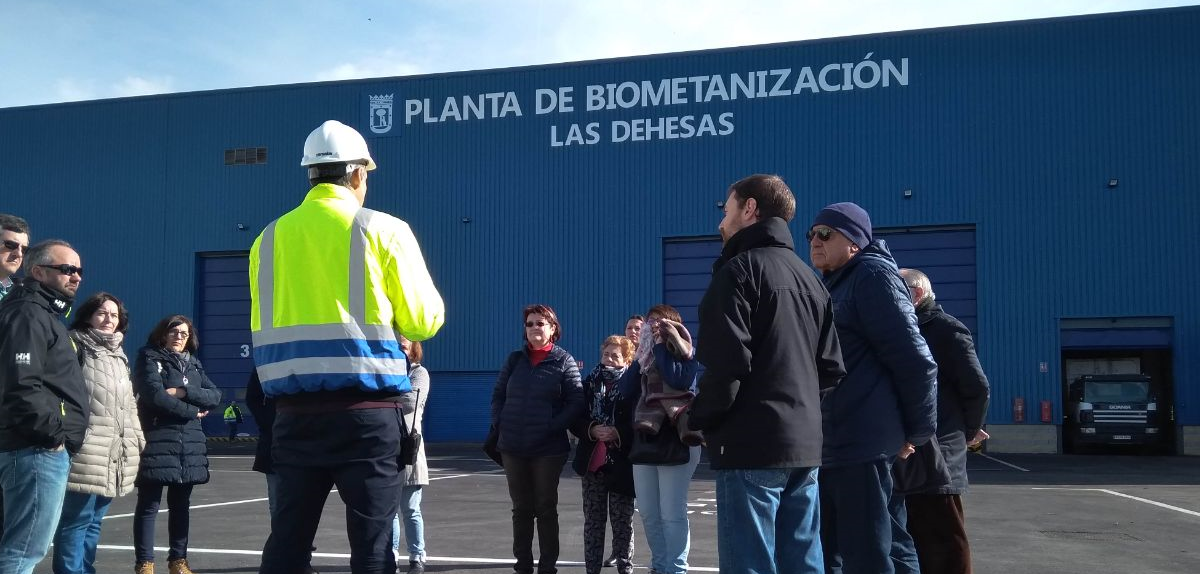
Valdemingómez Technology Park, in Villa de Vallecas, is the place which houses all the urban waste treatment facilities of Madrid, taking in over four thousand tonnes of waste the city produces every day.
The chief aim of this park is to process the waste and reutilise any that can be recovered, while safely disposing of non-recoverable waste into landfill. To make this possible, its sites have different facilities that play different roles: from separation and sorting to biomethanisation and waste incineration. There are therefore several processes that take place when handling the waste.
In February and the first week of March of this year, as part of the “Getting organic waste right” campaign, among many other activities, five visits were organised to Valdemingómez Technology Park. These visits, which are open to the public, aim to show the community the enormous challenge involved in managing the waste produced by the capital.
At the Technology Park, visitors were given the opportunity to learn about the facilities of the La Paloma and Las Dehesas treatment plants, the Biomethanisation Complex and the Visitors’ Centre.
The plants at La Paloma and Las Dehesas carry out the different processes involved in separating the waste that is collected from the non-recoverable and containers bins. Here, special, complex machinery separates out and classifies each type of waste which is then transferred to the recyclers to be re-used in their production processes. The Las Dehesas plant also takes in bulky waste, such as furniture and appliances.
The Biomethanisation Complex takes in the waste disposed of in the new brown bin: for organic waste. There it is pre-processed to prepare the organic waste before undergoing biomethanisation (the main recycling method Madrid uses for this kind of waste). In essence, this organic waste is filtered and then mixed with steam to create a homogenous mass to achieve the optimal conditions to break it down. Following this initial process, the mixture is then fed into 4, 20-metre high digesters where the organic waste decomposes in the absence of oxygen. This process takes 21 days until completion and it produces biogas (with similar characteristics to natural gas and also matter that has fertilising properties which can later be composted).
The Visitors’ Centre is the area within the park focused on education and raising awareness. Here, visitors can learn more details about other processes take place at the other plants in the complex so as to get an overview of how city waste is treated. This centre also teaches the importance of the three Rs: Reduce, Reuse and Recycle, emphasising how we must change our consumer habits and adopt a more environmentally-friendly, circular economy.
During the 5 visits we paid together with over a hundred and fifty residents from Madrid, participants took the opportunity to ask their main questions about separating waste in the household, such as: Once the rubbish bag leaves the bin, where do they take it? What do they do with it? Why are we now separating organic matter…?
The best answer to all these questions is to see it for yourself.
If you’ve been unable to visit the Technology Park as part of the “Getting organic waste right” campaign and would still like to visit, you can do so in the future by arranging a visit directly via the park’s website or by calling 915 132 062 / 915 888 874.
We encourage you to pay it a visit!
¡Te animamos a visitarlo!
